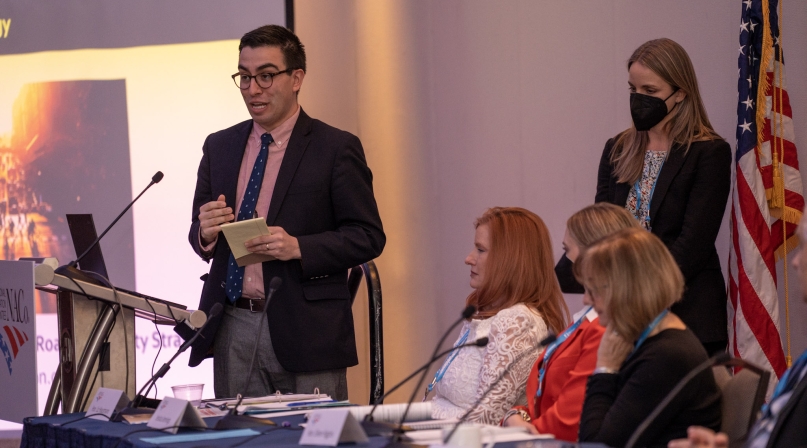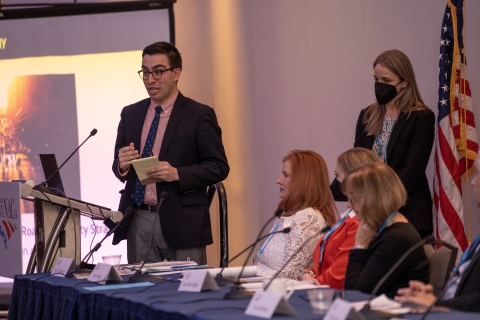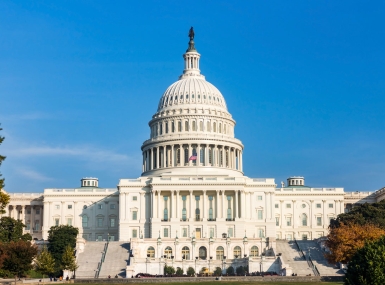DOT intends to prove itself with IIJA rollout

Key Takeaways
The U.S. Department of Transportation knows it has an image to change as it implements the Infrastructure Investment and Jobs Act, after already defying the odds to pass a bipartisan bill.
“We’re the dog who caught the car,” said Will Rasky, DOT special assistant for governmental affairs. “What’s in front of us right now is the opportunity to deliver … on time, on task and on budget. That has not been the calling card of U.S. infrastructure projects for a number of years, and we believe we can get back to that again.”
Part of that will be ensuring the federal government can get funding down to the local level and forming an almost symbiotic relationship with states, he said Feb. 12 to members of NACo’s Transportation Steering Committee.
Rasky said part of DOT’s communication with the National Governors’ Association included beseeching them to make sure local governments were part of their discussions to maximize the impact of their funding. That effort should benefit from 40 new discretional grant programs with more precisely tailored funding.
Equity will play a major role in funding, Rasky noted, because for too long, many communities have felt overlooked by infrastructure investments.
“We have to make sure that we’re using every level of power we have across the administration,” he said.
But paramount in the Biden administration’s transportation priorities is road safety. Transportation Secretary Pete Buttigieg announced the National Roadway Safety Strategy in January, which provides practical steps to systematically reduce avoidable traffic deaths and injuries.
“It sounds maybe fantastical or over the top, but I think the point is to establish the understanding that we don’t accept roadway fatalities as something that is acceptable,” said Emily Schweninger, a DOT senior policy advisor. “I feel like safety is this fundamental principle…it crosses a lot of different sectors; it also crosses a lot of divides and approaches.”
That approach, she said, would be holistic and in cooperation with different levels of government, without being too prescriptive.
That said, she suggested there was a simple solution.
“There’s so much that can be done by slowing down.”

Attachments
Related News

U.S. House of Representatives passes SPEED Act and other permitting reform bills
On December 18, the U.S. House of Representatives passed the SPEED Act (H.R. 4776). The SPEED Act would strengthen county involvement in decision-making and make needed commonsense reforms to the federal environmental review process.

Counties and Railroads: Shared Priorities for the Next Surface Transportation Bill
County leaders from across the country have a vital opportunity to ensure their infrastructure priorities are front and center.

House lawmakers introduce bipartisan legislation to support World Cup local transportation needs
On December 2, U.S. Reps. Rick Larsen (D-Wash.-02) and Burgess Owens (R-Utah-04) introduced the Transportation Assistance for Olympic and World Cup Cities Act (H.R.6348), a bipartisan effort to strengthen local transportation systems in communities preparing to host major international sporting events
